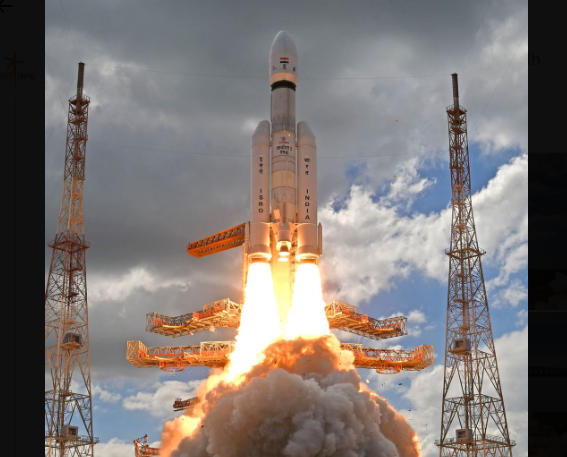
Chandrayaan-3: ISRO successfully performs 4th orbit-raising manoeuvre

The Indian Space Research Organisation’s (ISRO) scientists on Thursday (July 20) successfully performed the fourth orbit-raising manoeuvre of the Chandrayaan-3 spacecraft from Bengaluru.
They performed the manoeuvre from the ISRO Telemetry, Tracking and Command Network (ISTRAC).
The next firing is planned for July 25 between 2 pm and 3 pm, the national space agency headquartered in Bengaluru said.
Also read: Chandrayaan-3 launch: Far more than reaching for the Moon
India celebrates International Moon Day 2023 by propelling Chandrayaan-3 a step closer to the Moon, it added.
The Chandrayaan-3 mission to the moon was launched on July 14.
“…craft is on way to the Moon. In another few days it will go (the lander will soft-land on the Lunar surface),” ISRO Chairman Somanath S said earlier in the day while delivering the inaugural address to the Space Science Technology & AwaReness Training (START) programme 2023.
“I am sure that you will find something very substantial through this (Chandrayaan-3) mission as far as science is concerned,” he said.
Also read: Chandrayaan-3 decoded: Here’s how ISRO plans to soft land on Moon in 45 days
The soft landing of the craft on the lunar surface is planned for August 23.
Chandrayaan-3 Mission update:
The spacecraft's health is normal.The first orbit-raising maneuver (Earthbound firing-1) is successfully performed at ISTRAC/ISRO, Bengaluru.
Spacecraft is now in 41762 km x 173 km orbit. pic.twitter.com/4gCcRfmYb4
— ISRO (@isro) July 15, 2023
ISRO’s miss to study Sun
Meanwhile, ISRO is almost ready with XPoSat (X-ray Polarimeter Satellite), the country’s first dedicated polarimetry mission to study various dynamics of bright astronomical X-ray sources in extreme conditions, Chairman Somanath S said on Thursday.
He said preparations are underway for the Aditya-L1 mission to study the Sun, adding that discussions are on to create a satellite to study extrasolar planets (exoplanets) as well.
Also read: Chandrayaan-3: Timeline of ISRO’s moon missions from 2003 to 2023
“We are also discussing missions to the Moon further for landing,” the ISRO chief, who is also the Secretary of the Department of Space, said in his inaugural address to the Space Science Technology & AwaReness Training (START) programme 2023, being held virtually.
“I am sure that you will find something very substantial through this (Chandrayaan-3) mission as far as science is concerned,” he said.
“We are also preparing for the mission to understand and study the Sun through this Aditya-L1 mission, and the X-ray polarimeter satellite is almost ready and we are hoping for its launch to understand stars better,” Somanath said.
He said discussions are on regarding missions to understand other planetary objects like Venus, and on how to create a satellite to study extrasolar planets (planets outside the solar system).
According to ISRO officials, the XPoSat will carry two scientific payloads in a low earth orbit.
The primary payload POLIX (Polarimeter Instrument in X-rays) will measure the polarimetry parameters (degree and angle of polarization) in medium X-ray energy range of 8-30 keV photons of astronomical origin. The XSPECT (X-ray Spectroscopy and Timing) payload will give spectroscopic information in the energy range of 0.8-15 keV, they said.
Aditya L1 will be the first space-based Indian mission to study the Sun.
The spacecraft is planned to be placed in a halo orbit around the Lagrange point 1 (L1) of the Sun-Earth system, which is about 1.5 million km from Earth.
A satellite placed in the halo orbit around the L1 point has the major advantage of continuously viewing the Sun without any occultation/eclipses. This will provide a greater advantage of observing the solar activities and its effect on space weather in real time, according to ISRO.
The spacecraft carries seven payloads to observe the photosphere, chromosphere and the outermost layers of the Sun (the corona) using electromagnetic and particle and magnetic field detectors, the space agency said.
Using the special vantage point L1, four payloads directly view the Sun and the remaining three payloads carry out in-situ studies of particles and fields at the Lagrange point L1, thus providing important scientific studies of the propagatory effect of solar dynamics in the interplanetary medium.
(With agency inputs)


